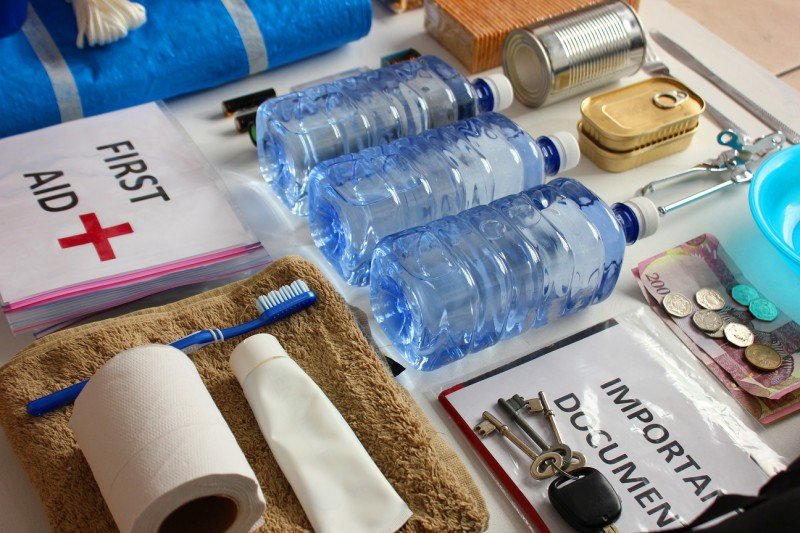When faced with an emergency situation where your usual water supply is compromised, it becomes crucial to prioritize your safety by ensuring the water you consume is purified. Assessing water sources carefully is the first step towards this goal.
Start by identifying potential water sources in your vicinity, such as rivers, lakes, ponds, or even rainwater. However, it is important to remember that not all water sources are safe to drink from, even if they may seem pristine at first glance. Contaminants and bacteria can lurk beneath the surface, posing serious health risks.
To prioritize your safety, it is advisable to consider the following factors before choosing a water source:
Prioritizing your safety during emergency water purification ensures that you do not put your health at risk. By carefully assessing the various water sources available to you, you can make an informed decision and take necessary precautions to protect yourself and your loved ones.
Essential Water Disinfection Techniques: Ensuring Potable Supply
In emergency situations, having access to clean and safe drinking water is of paramount importance. Proper water disinfection techniques help ensure that the water supply is free from harmful bacteria, viruses, and other contaminants. Here are some essential methods for purifying water during emergencies:
1. Boiling: Boiling water is one of the most effective and accessible methods of disinfection. By bringing the water to a rolling boil for at least one minute (or longer at higher elevations), most pathogens can be killed, making the water safe to consume. However, boiling does not eliminate chemicals or toxins, so it is recommended to filter the water beforehand if necessary.
2. Chlorination: Chlorine is a widely used disinfectant that effectively kills bacteria and viruses in water. It is available in liquid or tablet forms and can be added to water according to the instructions provided. Generally, a 0.2% concentration of chlorine is recommended, and the water should be allowed to sit for at least 30 minutes before consuming. This method is particularly useful when boiling water may not be an option.
3. Filtering: Filtering water helps remove large particles, sediments, and some microorganisms. Although it does not eliminate all pathogens, it can be combined with other methods like boiling or chlorination for enhanced effectiveness. There are various types of filters available, including activated carbon filters, ceramic filters, and reverse osmosis systems. Choosing the right filter depends on the specific contaminants present in the water.
Key Guidelines for Emergency Water Storage and Treatment
During emergencies or natural disasters, access to safe and clean drinking water may be compromised. It is important to have a plan in place for emergency water storage and treatment to ensure the health and well-being of you and your family. Here are some key guidelines to follow:
1. Store an adequate water supply: It is recommended to store at least one gallon of water per person per day for a minimum of three days. This will cover drinking, cooking, and sanitation needs. Use clean, food-grade containers with tight-fitting lids to store water. Label each container with the date it was filled and replace stored water every six months to ensure freshness.
2. Prioritize water sources: Identify and prioritize potential water sources in your immediate surroundings. These may include faucets, water heaters, toilet tanks (not the bowls), and ice cubes. Use the water from these sources first before moving on to other emergency water sources.
3. Treat water before consuming: In case of doubt regarding water safety, it is important to treat the water before drinking. Boiling water is the safest method: bring water to a rolling boil for at least one minute to kill any disease-causing organisms. If boiling is not possible, use water purification tablets or a water filter specifically designed for removing harmful bacteria, viruses, and parasites.
Safeguarding Your Health: Common Mistakes to Avoid
When it comes to emergency water purification, there are several common mistakes that people often make which can compromise their health and safety. Being aware of these mistakes and taking necessary precautions is crucial during times of crisis. Here are a few key guidelines to help you avoid these pitfalls:
1. Drinking Untreated Water: One of the most common mistakes is consuming water without proper purification. This puts you at risk of consuming harmful bacteria, parasites, and other contaminants. Always prioritize treating water before drinking it, using methods such as boiling, using water purification tablets, or investing in a portable water filter.
2. Neglecting to Store Clean Water: Failing to store an adequate supply of clean water is another mistake to avoid. In emergency situations, water supplies may become contaminated or cut off completely. It is recommended to store at least one gallon of water per person per day for a minimum of three days. Ensure you have a sufficient supply of clean water to sustain yourself and your family until help arrives.
3. Overlooking Proper Water Container Sanitization: Many people forget to clean and sanitize their water containers regularly. This can lead to the growth of harmful bacteria and compromise the safety of your water. It is important to clean your containers with soap and water, rinse them thoroughly, and then sanitize them using a dilute bleach solution.

